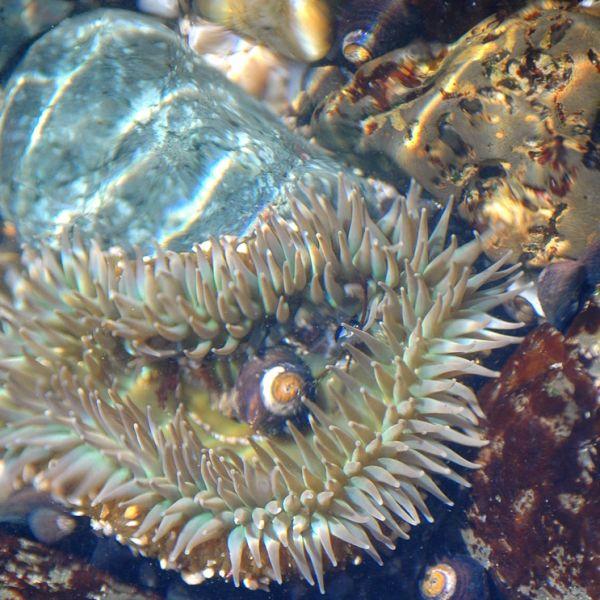The biosphere is made up of the parts of Earth where life exists. The biosphere extends from the deepest root systems of trees, to the dark environment of ocean trenches, to lush rainforests and high mountaintops.Scientists describe Earth in terms of spheres. The solid surface layer of Earth is the lithosphere. The atmosphere is the layer of air that stretches above the lithosphere. The Earth’s water—on the surface, in the ground, and in the air—makes up the hydrosphere.Since life exists on the ground, in the air, and in the water, the biosphere overlaps all these spheres. Although the biosphere measures about 20 kilometers (12 miles) from top to bottom, almost all life exists between about 500 meters (1,640 feet) below the ocean’s surface to about six kilometers (3.75 miles) above sea level.Origin of the BiosphereThe biosphere has existed for about 3.5 billion years. The biosphere’s earliest life-forms, called prokaryotes, survived without oxygen. Ancient prokaryotes included single-celled organisms such as bacteria and archaea.Some prokaryotes developed a unique chemical process. They were able to use sunlight to make simple sugars and oxygen out of water and carbon dioxide, a process called photosynthesis. These photosynthetic organisms were so plentiful that they changed the biosphere. Over a long period of time, the atmosphere developed a mix of oxygen and other gases that could sustain new forms of life.The addition of oxygen to the biosphere allowed more complex life-forms to evolve. Millions of different plants and other photosynthetic species developed. Animals, which consume plants (and other animals) evolved. Bacteria and other organisms evolved to decompose, or break down, dead animals and plants.The biosphere benefits from this food web. The remains of dead plants and animals release nutrients into the soil and ocean. These nutrients are reabsorbed by growing plants. This exchange of food and energy makes the biosphere a self-supporting and self-regulating system.The biosphere is sometimes thought of as one large ecosystem—a complex community of living and nonliving things functioning as a single unit. More often, however, the biosphere is described as having many ecosystems.
Biosphere ReservesPeople play an important part in maintaining the flow of energy in the biosphere. Sometimes, however, people disrupt the flow. For example, in the atmosphere, oxygen levels decrease and carbon dioxide levels increase when people clear forests or burn fossil fuels such as coal and oil. Oil spills and industrial wastes threaten life in the hydrosphere. The future of the biosphere will depend on how people interact with other living things within the zone of life.In the early 1970s, the United Nations established a project called Man and the Biosphere Programme (MAB), which promotes sustainable development. A network of biosphere reserves exists to establish a working, balanced relationship between people and the natural world.Currently, there are 563 biosphere reserves all over the world. The first biosphere reserve was established in Yangambi, Democratic Republic of Congo. Yangambi, in the fertile Congo River Basin, has 32,000 species of trees and such endemic species as forest elephants (Loxodonta cyclotis) and red river hogs (Potamochoerus porcus). The biosphere reserve at Yangambi supports activities such as sustainable agriculture, hunting, and mining.One of the newest biosphere reserves is in Yayu, Ethiopia. The area is developed for agriculture. Crops such as honey, timber, and fruit are regularly cultivated. However, Yayu’s most profitable and valuable resource is an indigenous species of plant, Coffea arabica. This shrub is the source of coffee. Yayu has the largest source of wild Coffea arabica in the world.
Bạn đang xem: Biosphere
Nguồn: https://collagenmidi.com
Danh mục: सवाल
This post was last modified on November 14, 2024 3:03 pm

